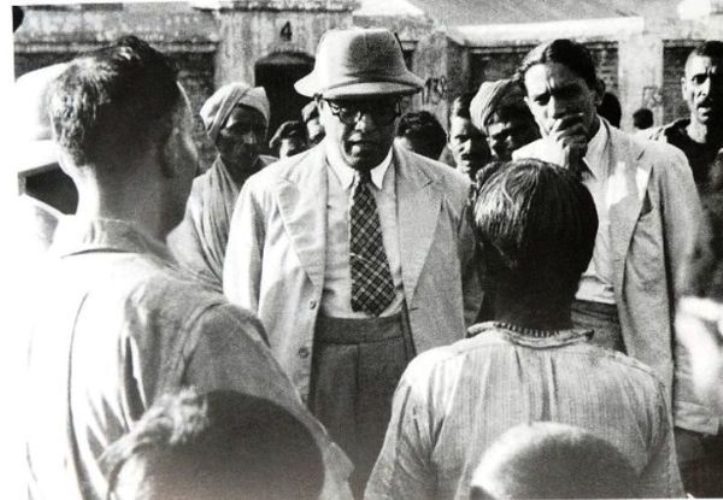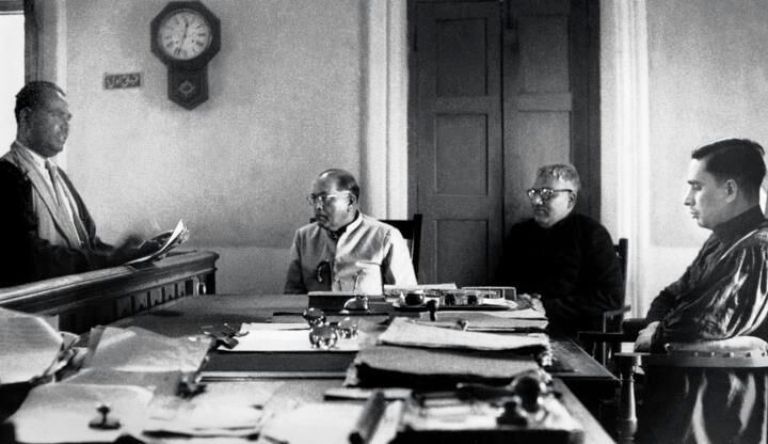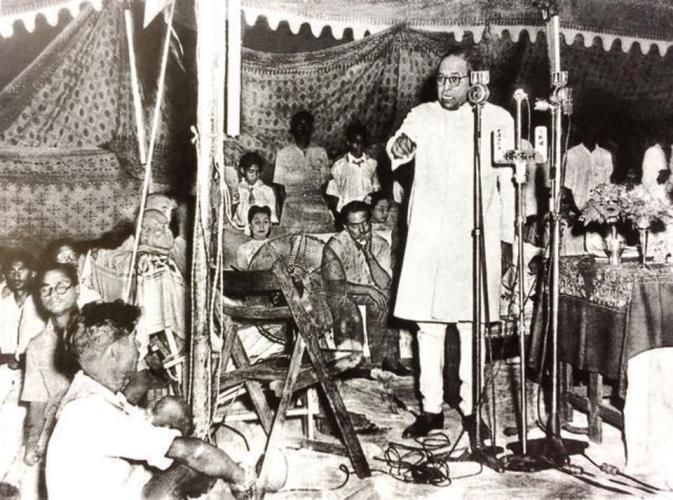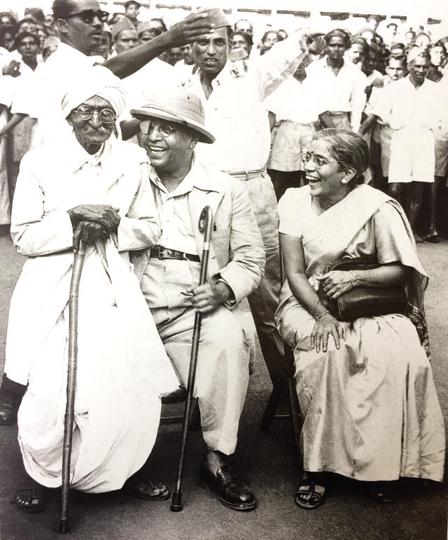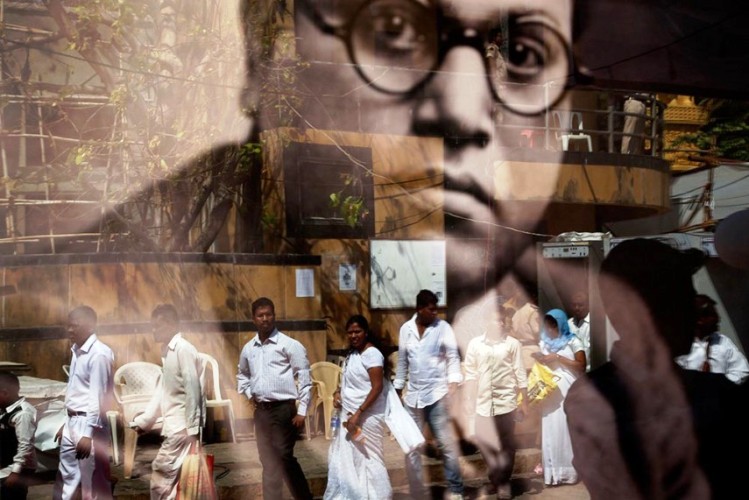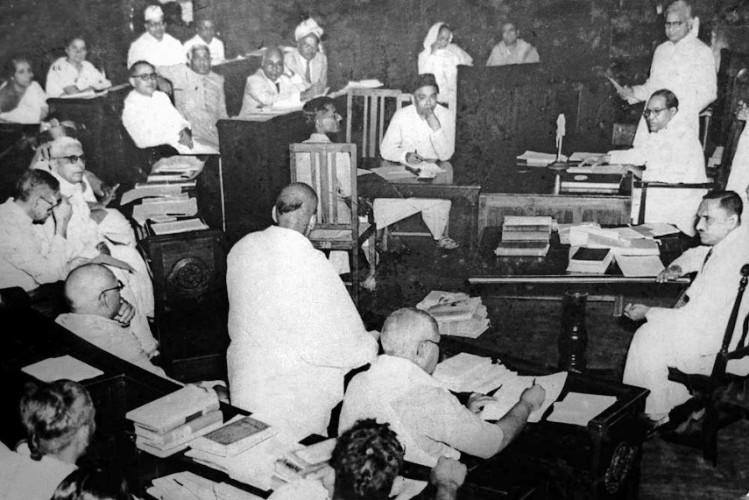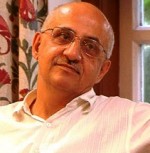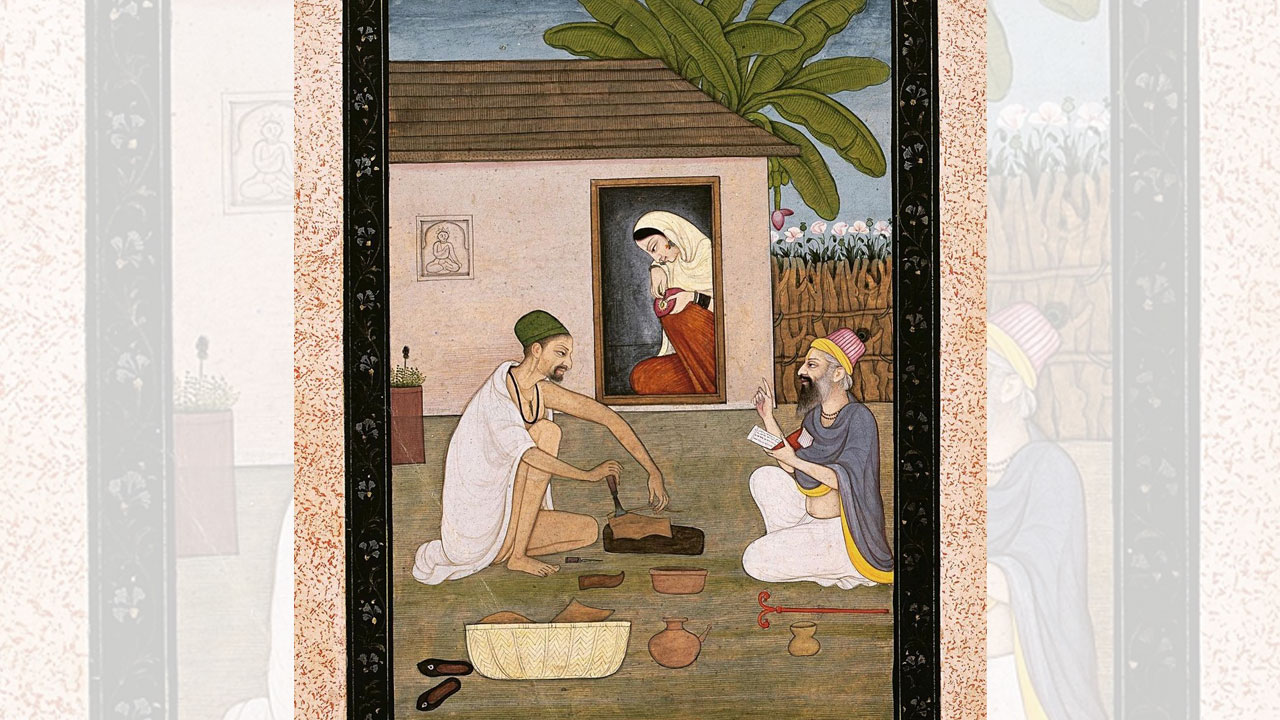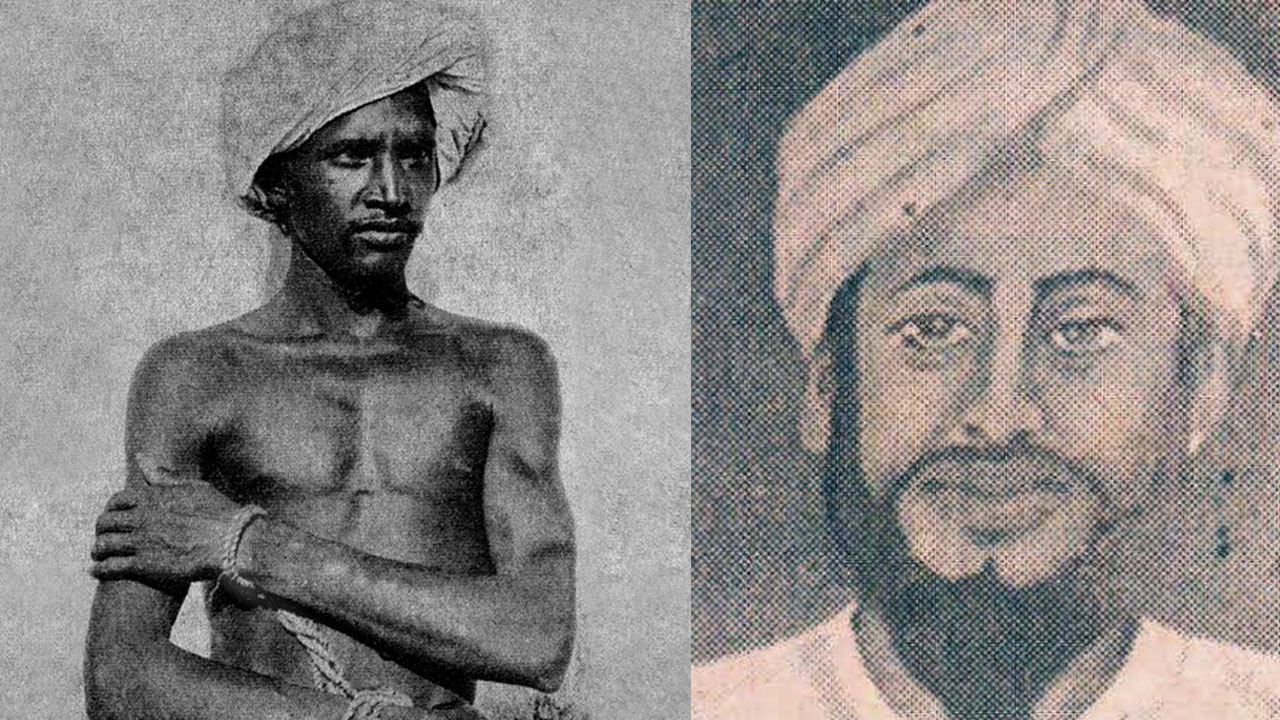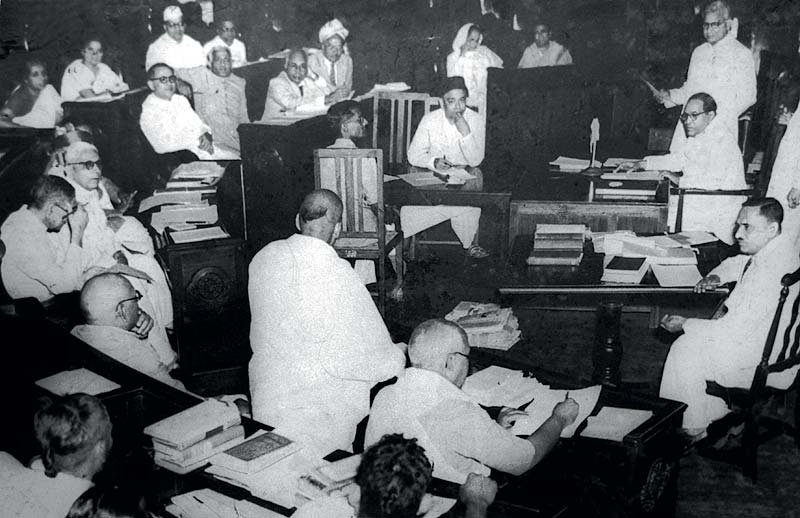Among most secular progressive people in India today there is the belief – indeed, an article of faith – that India has been, through most of its long history, a diverse, pluralist and tolerant civilization – the land of Buddha, Kabir and Nanak; of Ashok, Akbar and Gandhi. It is a culture in which every major faith in the world has found the space and freedom to flourish and grow, where persecuted faiths have received refuge, where heterodox and sceptical traditions have thrived alongside spiritual and mystical traditions, and where ordinary people live and respect faith systems different from their own. In the words of Maulana Azad, “It was India’s historic destiny that many human races and cultures and religious faiths should flow into her, and many a caravan should find rest here … One of the last of the caravans was that of the followers of Islam …”[1]
All of this is true, and this is why the rise of a narrow, monolithic and intolerant interpretations of Indian culture – what Romila Thapar describes as the right-wing semitization of Hinduism – in new India causes us deep disquiet.[2] But what our analysis does not stress often or deeply enough is that all of India, both old and new, has been also built on the edifice of monumental inequality and the oppression of caste, and that this is equally the story of India, old and new.
I am sometimes asked how I would describe my political beliefs. I clear my throat, a little embarrassed that I cannot offer a concise answer. I am a secular, democratic, humanist, socialist, I sometimes venture. If I had to choose just one of these appellations, it would probably be humanist. I add that there have been many influences on my politics. The earliest influence, in my college days, was Karl Marx, and from reading and discussing him I have absorbed class analysis, belief in an egalitarian society and a redistributive state, and a passion for the equal rights of labour and the oppressed. In my years in government, I was sometimes called – both mockingly and, at times, affectionately – Comrade Collector in the districts where I served, but I think Marxists never know quite where to place me, because I speak of social and economic equality but also, in the same breath, of egalitarian compassion.
From Mohandas Gandhi, too, I have learnt much, but perhaps foremost is the importance of conformity between means and ends – and that no end, however lofty, justifies violent, unjust and untruthful means – his idea of secularism as equal respect for all faiths, an alternate development economics “as if people matter”, non-violence, and the importance of lifelong struggling – even if hopelessly failing, as I have often done – for greater ethical consistency between a person’s beliefs and the way she lives her life.[3] From feminist philosophers, I have learnt that biology does not, and cannot be allowed to determine a person’s potential, rights, dignity and destiny; about interlocking systems of inequality and privilege; about assertion, nurturing, caring and solidarities.
But, increasingly, as the years pass, I am influenced – and challenged – more and more by Babasaheb Bhimrao Ramji Ambedkar. You cannot change India until you understand India, you cannot understand India until you understand caste, and you cannot understand caste until you read Ambedkar. For those who celebrate Babasaheb, from Mayawati to Arundhati Roy, the assumption appears to be that it is obligatory to pit him against Gandhi, to discredit all that Gandhi stood for so as to install Ambedkar in his due place in modern Indian history. It is as though Ambedkar can stand tall only if his lifelong political adversary, Gandhi, is toppled from his pedestal. I do not agree. I feel that history is too complex and pluralist to be reduced to a simple ordering – and reordering – of heroes and villains. History is expansive enough to admit the decisive roles of Mohandas and Babasaheb, the two vastly different men who most influenced the making of new India in the years of the anti-colonial struggle for freedom and the immediate years after Independence.
Having said this, I find I agree with many of Babasaheb’s major critiques of Mohandas. He rightly rejects Mohandas’ idea of trusteeship, which undermines the imperative for redistributive policies and laws, ignores the injustice and oppression that is the invisible fount of a great part of large wealth accumulation, and leaves the dispossessed at the mercy of the “goodwill” of the wealthy.
Babasaheb is correct in dismissing Mohandas’ glorification of “village republics”, which he accurately describes as “cesspools” of caste injustice, inequity and bigotry. He opposes, with equal justification, Mohandas’ defence of tradition, because tradition in India has always been implacably hostile to the rights and dignity of women and people belonging to disadvantaged castes. He rejects acutely, as a “myth”, the idea of a Hindu society or community.[4] He suggests instead that caste Hindus constitute a society devoid of a unifying principle, a conglomeration of an “amorphous mass of people”.[5] People owe primary loyalty within it to their sub-caste, whose customs and purity have to be maintained through endogamy and restrictions on commensality; he therefore believes that the system automatically pits one sub-caste against another. He observes that the only time one sub-caste feels unified with another, or one caste with another, is during conflict with other communities. The gradation of castes, with greater rights given to higher castes, also prevents the formation of a unified front against the caste system, as each caste “takes pride and consolation” in being graded above certain other castes.[6]
But Mohandas’ greatest failing was his vigorous defence of caste. He opposed untouchability and was an influential champion for the dignity of caste-based scavengers who cleaned human excrement with their own hands. He took to cleaning his own toilets, which was a radical and humanist act in the times in which he lived. However, his monumental mistake – an error so unjust to millions of India’s oppressed castes that it has led to the rejection of his entire legacy by many of India’s poorest people – was in insisting that untouchability was an aberration of caste, and that caste was in itself was a benign social system for the division of labour.
How could Mohandas defend caste!
I cannot understand how Mohandas could defend the idea of caste even if he artificially excised from it the idea of untouchability. How could he defend a system of ordered social hierarchy based on birth? And even more pertinently, how could he have justified a system that traps a child into a profession because she or he was born into a family that belongs to a particular caste. Babasaheb insisted – and I believe accurately – that far from being an aberration of caste, the cruel system of untouchability was intrinsic to the caste system. That caste was not a division of labour but a “division of labourers”, in which certain groups of people are trapped in devalued work, based on their parents’ social status.[7] It does not allow mobility – therefore, he viewed caste as a sort of endogamous, enclosed class, which further suppresses individual development by forcing people to work in occupations that they do not necessarily like or choose.[8] In this respect, he thought that industrialization and capitalism would create conditions for Dalits to escape the stigma of caste, whereas Mohandas was opposed to modernity and industrialization.
Further, Babasaheb was convinced not only that untouchability is intrinsic to the caste system, but also that the caste system is inextricable from the Hindu religion. Mohandas was a devout Hindu all his life and is believed to have died with Ram’s name on his lips. But Babasaheb declared in 1936, “I was born a Hindu and have suffered the consequences of untouchability. I will not die a Hindu.” He described Hindu society with what Arundhati Roy aptly terms as a “chilling metaphor”: “as a multi-storied tower with no staircase and no entrance. Everyone has to die in the storey they were born into.”[9] This battle against the Hindu faith culminated in his epic conversion to Buddhism in 1956, along with about a million Dalits, a few months before his death.
Babasaheb, born into an indigent, low-caste Mahad family in Mhow, an army cantonment, was able to acquire an education only because his father was a subaltern in the British Army. He studied law at Columbia University on a Baroda state scholarship, and returned first to join the Baroda administration but was wounded and angered by the open caste humiliations he endured in office. Instead, he joined as a professor at the Sydenham College in Bombay around the time Mohandas returned to India to lead its freedom struggle.[10] In 1924, Babasaheb formed the Bahishkrut Hitkarni Sabha to promote education and socio-economic improvement among the most disadvantaged castes, as well as to provide a forum to voice grievances.[11]
In 1927, he led a movement, known as the Mahad Satyagrah, to assert the rights of traditionally untouchable castes to draw water from public tanks and wells and to enter Hindu places of worship. In Mahad, more than a thousand people marched to the Chavadar Lake and drank water from the tank in the centre of the town. Worried that Babasaheb and his followers were planning to enter a Hindu temple, a riot ensued. Upper-caste Hindus later “purified” the tank by performing prayers, as they believed that the Untouchables had polluted the tank by drinking its water. They also filed a case against Babasaheb, claiming that tank was private property. That year, on 25 December, Babasaheb publicly burnt the Manusmriti in protest. Years passed before December 1937, when the Bombay High Court finally ruled that Untouchables had the right to use water from the tank.
Seeing casteism first-hand
Decades later, in my many district postings and as the head of the department charged with Scheduled Caste Welfare in Madhya Pradesh and Chhattisgarh, and my later research into the practice of untouchability, I found that in the majority of villages across large swathes of the country, Dalits are still barred from access to common wells and temples. In a village in the Sagar district of Madhya Pradesh in 1991, Dalit youth raised the demand that since the upper-caste enclaves of the village had many hand-pumps from which Dalits were barred, at least one hand-pump should be drilled in the Dalit hamlet. But the upper-caste villagers were outraged at their assertion and punished them with boycott and violence, which ultimately brought them to their knees. In Bilaspur, Madhya Pradesh, in 1996, a Dalit man touched a Hanuman statue in gratitude that his wife’s life had been saved, and was brutally attacked and exiled from his village. I wrote both their stories in Unheard Voices and Shyam Benegal made these into a film, Samar. But these stories are far from unusual. They continue to be so commonplace in rural India that they are, for many, unremarkable. Babasaheb’s proud words during the Mahad Satyagrah in 1927 still ring in my heart: “It is not as if drinking the water of Chavadar Lake will make us immortal. We have survived long enough all these days without drinking it. We are not going to the Chavadar Lake merely to drink its water. We are going to the Lake to assert that we too are human beings like others. It must be clear that this meeting has been called to set up the norm of equality…”[12]
I recall also Marathi poet L. S. Rokade’s fierce lament about the injustice of unequal birth:
Mother, you used to tell me
when I was born
your labour was very long.
The reason for your long labour;
I, still in your womb, was wondering
Do I want to be born?
Do I want to be born at all
in this land?
Where all paths raced horizonwards
but to me barred…
Mother, this is your land
flowing with water
Rivers break their banks
Lakes brim over
And you, one of the human race
must shed blood
struggle and strike
for a palmful of water…[13]
Constitutional morality
My other debt to Babasaheb is for leading the writing of India’s Constitution, one of the finest in the world, designed to illuminate for governments pathways and precepts of just governance. He negotiated painfully and resolutely a document which no doubt reflected political compromise, but which in its substantive guarantees and even more in its Directive Principles lays out the blueprint of a just and equal state and society.
He was acutely conscious, right up to his death, that political equality as offered by India’s Constitution did not in itself guarantee social and economic equality, and for which a much longer struggle would have to be waged. These lines, taken from his speech, “My Personal Philosophy”, an All-India Radio broadcast on 3 October 1954 remain prophetic today: “Indians today are governed by two different ideologies. Their political ideal set out in the preamble to the Indian Constitution affirms a life of liberty, equality and fraternity. Their social ideal embodied in their religion, denies them.”
He reminded us pertinently that the Constitution establishes a higher morality than all our respective faiths, prejudices and beliefs, and this higher morality is binding on us all even if it conflicts with our personal beliefs. Many years later, when passing their historic judgment that struck down Section 377 of the Indian Penal Code (that criminalizes homosexuality), Justices A. P. Shah and Murlidhar distinguished between public and Constitutional morality. They laid down, implicitly recalling Ambedkar, that when these are at odds or in conflict with each other, the only morality which passes the test of compelling state interest is Constitutional morality.[14]
And Babasaheb placed as much stress on fraternity as he did on liberty and equality. Fraternity, he said, nothing other than “fellow feeling”, is an essential element of a just society.[15] It is the “disposition of an individual” to treat others “as the object of reverence and love”, and the “desire to be in unity with fellow beings”. He also declared that “I and my neighbours are all brothers…”[16] He should surely have added “…and sisters”.
His emphasis on fraternity – which recognizes that the foundation of all contemporary liberal Indian ideas of secularism, pluralism, social equality is ultimately the idea and practice of social solidarity – is contained in his incandescent words, that only “collective liberty is true liberty”.[17] The preamble of India’s Constitution speaks of fraternity as essential for affirming the dignity of the individual and the unity of the nation. It is significant that a nationalism as imagined by the Constitution and its principal author Babasaheb is based on the idea of the brotherhood and sisterhood of all people who constitute the nation, with all their diversities of faith, caste, gender, language and class. This is light years away from the aggressive homogenizing nationalism of the RSS-led political establishment, the anti-thesis of the ideas of fraternity for which we owe Babasaheb one more great debt.
[1]Ashutosh Varshney, Ethnic Conflict and Civic Life: Hindus and Muslims in India, (New Haven: Yale University Press, 2002), p 67
[2]Romila Thapar, ‘A Historical Perspective on the Story of Rama’, in Sarvepalli Gopal, ed, Anatomy of a Confrontation: Ayodhya and the Rise of Communal Politics in India (New Delhi: Palgrave Macmillan, 1993) pp 141-163.
[3] A phrase adapted from E. F. Schumacher’s Small Is Beautiful, a collection of his essays first published in 1973. One of the major themes he discusses is the dehumanization of work occurring because of the replacement of craft or skill-based work with techniques of mass-production and the development of economies based on profit rather than need.
[4] Bhim Rao Ambedkar, Annihilation of Caste: The Annotated Critical Edition (New Delhi: Navayana, 2014), p 241.
[5] Bhim Rao Ambedkar, Annihilation of Caste, p 243.
[6] Bhim Rao Ambedkar, Annihilation of Caste, p 243.
[7] Bhim Rao Ambedkar, Annihilation of Caste, p 233.
[8] Bhim Rao Ambedkar, ‘Castes in India: Their Genesis, Mechanism and Development’, paper presented at the Columbia University on 9 May 1916), accessed 13 January 2014, https://ia600508.us.archive.org/22/items/castesinindia035140mbp/castesinindia035140mbp.pdf
[9] Arundhati Roy, ‘The Doctor and the Saint’ in Bhim Rao Ambedkar, Annihilation of Caste, p 104.
[10] Gail Omvedt, Hinduism as Counter-revolution: B. R. Ambedkar in Understanding Caste, (New Delhi: Orient Blackswan, 2011), pp 47-48.
[11] National Campaign on Dalit Human Rights, http://www.ncdhr.org.in/ncdhr/general-info-misc-pages/dr-ambedkar
[12] Bhim Rao Ambedkar, ‘Dr. Ambedkar’s Speech in Mahad’ in Arjuna Dangle, ed, Poisoned Bread: Translations from Modern Marathi Dalit Literature, (Noida: Orient Blackswan, 2009), p 259
[13] L. S. Rokade, ‘To Be or Not to Be Born’ in Arjuna Dangle, ed., Poisoned Bread, p 4.
[14] For full text of the judgment see http://www.nazindia.org/judgement_377.pdf
[15] Badal Sarkar, ‘Dr. B.R. Ambedkar’s Theory of State Socialism’, International Research Journal of Social Sciences, Vol 2, Issue 8, 38-41, August 2013, p 39.
[16] Badal Sarkar, ‘Dr. B.R. Ambedkar’s Theory of State Socialism’.
[17] Badal Sarkar, ‘Dr. B.R. Ambedkar’s Theory of State Socialism’.
Forward Press also publishes books on Bahujan issues. Forward Press Books sheds light on the widespread problems as well as the finer aspects of Bahujan (Dalit, OBC, Adivasi, Nomadic, Pasmanda) society, literature, culture and politics. Contact us for a list of FP Books’ titles and to order. Mobile: +919968527911, Email: info@forwardmagazine.in
